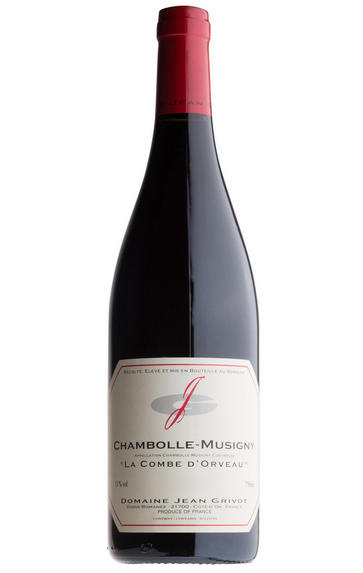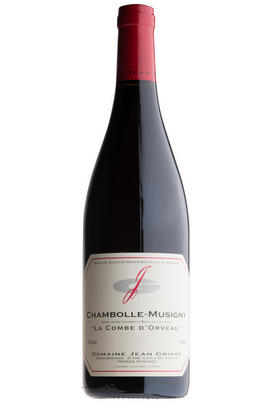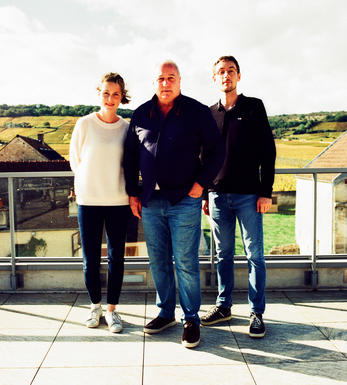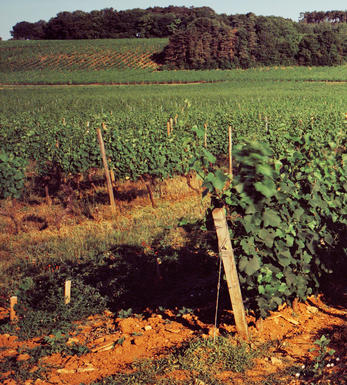
2010 Chambolle-Musigny, La Combe d'Orveaux, Domaine Jean Grivot, Burgundy

About this WINE

Domaine Jean Grivot
Jean Grivot took over from his father, Gaston, in 1955. He handed the domaine on to son Étienne – married to Marielle Bize from Savigny – in the early 1980s. When Etienne Grivot took over, the house style was for gentle, graceful wines, perhaps a little weak in lesser vintages.
Étienne has since found his own voice, making a range of increasingly fine wines. Since the mid-2000s, he has reduced yields and fine-tuned vineyard and cellar work. The next generation – Mathilde and Hubert – are increasingly influential, working under their father’s experienced and wise guidance.

Chambolle Musigny
Chambolle produces the most elegant wines in the Côte de Nuits, having more active chalk and less clay in the soil than the other villages. The wines may be a little lighter in colour and less tannic than Gevrey-Chambertin but they have a sublime concentration of fruit. Village Chambolle-Musigny usually provides excellent value.
Le Musigny is one of the top half-dozen vineyards in Burgundy, producing wines of extraordinary intensity and yet with a magical velvety character. Les Amoureuses is immediately appealing, a wonderfully sensual wine which deserves Grand Cru status. Bonnes Mares tends to have a firmer structure and ages very well
- 94 hectares of village Chambolle-Musigny.
- 61 hectares of Premier Cru vineyards (24 in all). The finest vineyards include Les Amoureuses, Les Charmes, Les Fuées, Les Baudes and Sentiers.
- 24 hectares of Grand Cru vineyard - Bonnes Mares and Le Musigny.
- Recommended producers: de Vogüé, Mugnier, Roumier, Barthod.
- Recommended restaurant: Le Chambolle

Pinot Noir
Pinot Noir is probably the most frustrating, and at times infuriating, wine grape in the world. However when it is successful, it can produce some of the most sublime wines known to man. This thin-skinned grape which grows in small, tight bunches performs well on well-drained, deepish limestone based subsoils as are found on Burgundy's Côte d'Or.
Pinot Noir is more susceptible than other varieties to over cropping - concentration and varietal character disappear rapidly if yields are excessive and yields as little as 25hl/ha are the norm for some climats of the Côte d`Or.
Because of the thinness of the skins, Pinot Noir wines are lighter in colour, body and tannins. However the best wines have grip, complexity and an intensity of fruit seldom found in wine from other grapes. Young Pinot Noir can smell almost sweet, redolent with freshly crushed raspberries, cherries and redcurrants. When mature, the best wines develop a sensuous, silky mouth feel with the fruit flavours deepening and gamey "sous-bois" nuances emerging.
The best examples are still found in Burgundy, although Pinot Noir`s key role in Champagne should not be forgotten. It is grown throughout the world with notable success in the Carneros and Russian River Valley districts of California, and the Martinborough and Central Otago regions of New Zealand.


Buying options
Add to wishlist
Description
Fine pink purple, a real bundle of energy; dancing , luminous ripe cherry and redcurrant fruit, incredible length, a fine and slinky finish.
Jasper Morris MW, Burgundy Director
This has been one of the most exciting cellars in the whole of Burgundy for the last few vintages, a fact which is beginning to be reflected in the pricing. The significant reduction in crop this year, which Etienne Grivot ascribes more to the extreme winter cold than poor flowering, is also a factor. Etienne has been working hard to refine the tannins in his wines, and has surely succeeded in 2010, by producing wines of great energy but with suave, sophisticated finishes. These are brilliant wines that unfortunately, are in short supply.
wine at a glance
Delivery and quality guarantee